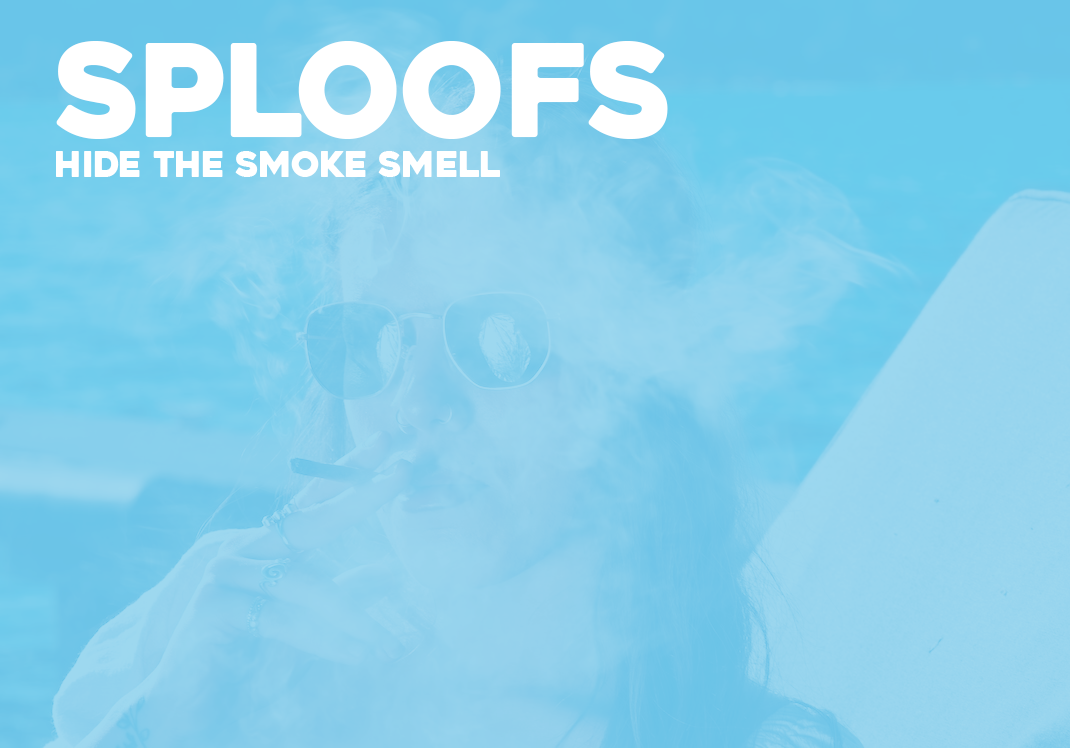Sploofs: Weed Smoke Filters for a No-Smell Sesh
Posted by DaySavers Team on May 7th 2025
It was my first night in college, back in the pre-legal era and a new (now lifelong) friend and I were taking advantage of my tiny, solo room to catch a quick smoke when suddenly there was a knock at the door.
"R.D. on duty; open up."
Thankfully, in the time it took me to stand up and open the door, my new friend stashed everything that was out. The dorm’s Resident Director stood outside and made a perfunctory glance around my tiny room, purposefully ignoring the cloud of smoke and intentionally not looking at anything.
"Alright," he said. "I didn’t see anything, but I could have."

Instead of busting us, he gave us the basic warnings on how easy it was to smell pot smoke, locate it in the dorms, and put a shot of fear into a couple of freshmen talking about expulsion ON MY FIRST NIGHT AT SCHOOL.
As I closed the door, I was admittedly rattled. But my new friend was already at work solving problems.
"OK," he said slowly as I turned back around. "We’re going to need a sploof."
It was my first exposure to the idea of the Sploof, an essential piece for any stoner looking to cover their tracks and smoke weed without the smell of smoke getting them in trouble.
So what exactly is a sploof? And how do you make a sploof? Let’s explore the world of weed smoke and odor catchers, from how they work to how to make one to readily available commercial options.
What is a Sploof?
A “sploof” is essentially an exchanger, or a device where stinky smoke goes in one side and clean(er) air comes out the other. It’s a way to keep the weed smell out of your apartment or, in my case above, dorm room.
Think of it as a smoke catcher or simple air purifier for weed smoke.
It’s a simple device that is designed to filter and reduce the smell of cannabis smoke. A sploof can be either storebought or homemade, but either way its general purpose is a weed odor eliminator, designed to keep your smoking as under wraps as possible.
What Does a Sploof Do?
A sploof works by filtering exhaled smoke through odor-trapping materials. As you exhale smoke into one end of the sploof, the filtering material – whether dryer sheets, carbon, or other substances – absorbs and masks much of the smell before the smoke exits the other end.
Are they perfect? No. Homemade devices, for example, often mask smell but not smoke. That said, do they help? Absolutely. A good sploof will undoubtedly reduce the smell of cannabis smoke.
How Does a Sploof Work?
The basic principle behind a sploof is simple: it forces smoke through layers of odor-absorbing material that traps odor molecules in the smoke before releasing it back to the air. These materials act as barriers, trapping and neutralizing odor molecules, particularly the terpenes responsible for weed's distinctive funk.
Common DIY sploofs use scented dryer sheets, which both filter and mask the smell with the light, pleasant scent of clean laundry. While commercial sploofs, on the other hand, often use activated carbon, which is highly porous and effective at absorbing volatile organic compounds at a molecular level, making it effective at absorbing odors.
Some are better at trapping smoke than others (the dryer sheet won’t clear the haze, just the smell), but they are all basically personal air filters and work through the same basic principles of trapping odor molecules.
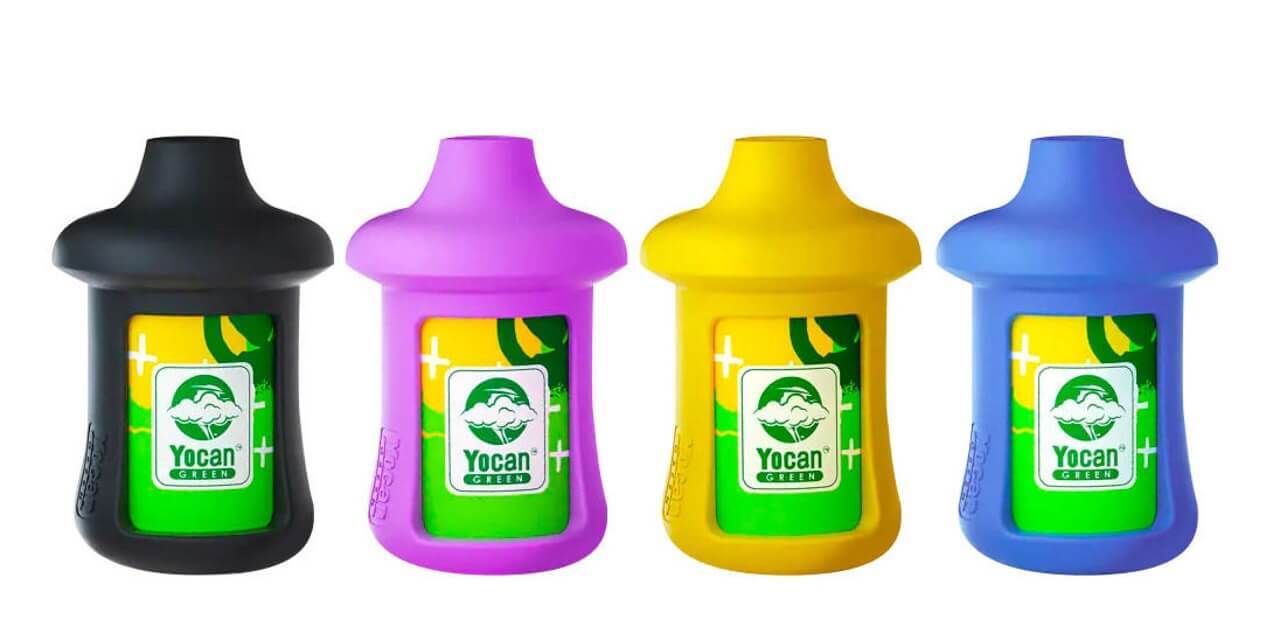
How Effective is a Sploof?
Well this, obviously, depends on the sploof, right?
Homemade sploofs are effective at reducing, but not completely eliminating, cannabis odor. Their efficiency depends on the materials used and how well they are constructed.
Commercial sploofs, which use activated carbon and more sophisticated filtration systems, are generally more effective and longer-lasting. That said, remember that even the best sploof may not make smoking entirely undetectable, especially in small or poorly ventilated areas.
How to Use a Sploof
Using a sploof is pretty straightforward:
- Take a hit like you normally would.
- Instead of exhaling into the air, blow the smoke directly into the open end of the sploof.
- The smoke passes through the filtering material, reducing the odor before it exits the other end.
But can you use a sploof with a pre-roll or blunt?
Kinda? I mean, the sploof will absolutely work to help filter the smoke you exhale through it.
However, pre-rolls, blunts and joints throw off a lot of smoke on their own. So while you may be capturing and filtering the smoke from your lungs, your airspace is still filling with un-filtered smoke coming directly off the burning end of your doobie.
Which, admittedly, is not ideal if you are trying to limit smoke smell.
How to Make a Sploof at Home: DIY Sploofs – Step by Step
Now let’s get down to brass tacks and talk about how to make one of these bad boys at home. Believe it or not, it can be remarkably simple to produce an effective smell-trapping sploof.
The easiest way to make a homemade sploof is with a toilet paper roll and some dryer sheets, two items found in almost every household.
Dryer Sheets & Toilet Paper Roll
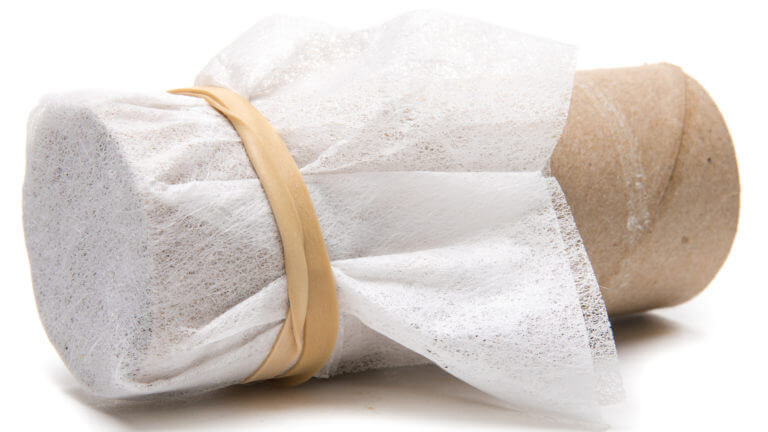
First, you need to gather some simple materials. You will need:
- - An empty toilet paper or paper towel roll;
- - 4–6 dryer sheets; and
- - A rubber band.
Once gathered, it’s remarkably simple:
First, stuff 3–4 clean dryer sheets inside the roll.
Next, place 1–2 dryer sheets over one end of the roll, so they form a barrier. Feel free to fold the sheets as that only means the smoke has to pass through additional layers before being released into the room.
Finally, secure the sheets on the end with a rubber band.
That’s it. Now just exhale your smoke through the open end. What comes out the other side may still look like smoke, but it will smell like the laundry room after the dryer’s been run.
How to Make a Sploof Without a Toilet Paper or Paper Towel Roll
Make a plastic bottle sploof by using a bottle instead of a cardboard roll as the main structure, 16- to 20-ounce plastic soda bottles work great. The plastic bottle sploof is a bit more durable and because it is made of plastic instead of cardboard, has the option of adding activated carbon to the mix.
Available through online retailers, at pet stores (where it is sold as filter media for fish tanks) or at hardware stores, activated carbon uses a vast network of microscopic pores to trap and absorb volatile organic compounds and odor molecules, making it a perfect substance to filter impurities out of water or air, including smoke.
However, if you don’t have activated carbon, you can always use dryer sheets to make a plastic bottle sploof and it will still work to remove smell, if not smoke.
First, cut the bottom off a plastic bottle. This will create a tube.
Next, fill the bottle with dryer sheets and/or activated carbon, you may need to soak the carbon to activate it.
Now, secure a dryer sheet or paper towel over the bottom with a rubber band.
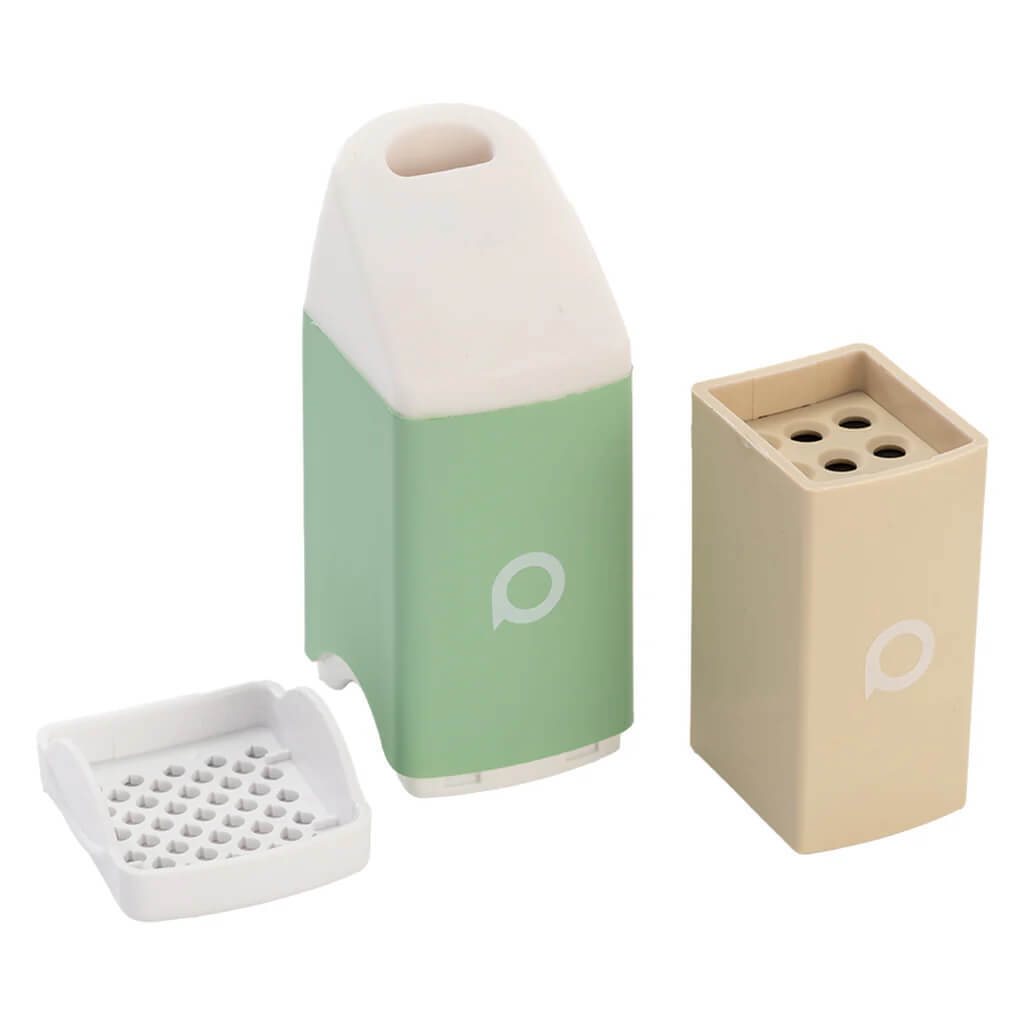
How to Make a Sploof Without Dryer Sheets
At my house, we don’t actually have dryer sheets. I find them wasteful, both in that they eventually wind up in landfills and that they cost money I would rather spend on weed. So what if your house is like mine and you need to make a sploof?
Simple, use paper towels, toilet paper, or coffee filters instead of dryer sheets. You can even spray the paper with air freshener for added odor masking.
Just follow the same assembly steps as above. It may not work as well as using dryer sheets, but it will get you over in a pinch.
How Long Does a Sploof Last?
How long your sploof lasts depends on what kind of sploof you have and how hard you use it.
Homemade sploofs will typically last for a few sessions before the filtering material becomes saturated with odor and loses effectiveness. Just replace dryer sheets or filters as needed, an activated carbon sploof will last longer, of course.
A commercial sploof on the other hand can last for 300–600 uses or about 1–2 months with regular use, depending on the amount and intensity of smoke filtered.
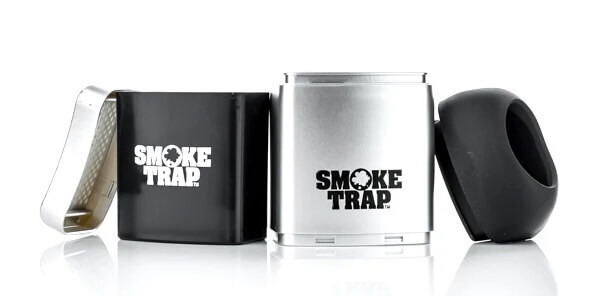
Commercial Sploofs
Despite the relative ease and low cost of building your own sploof at home, there are several higher-quality commercial sploofs available. And while they all work on the same basic principle as a homemade sploof, they all tend to not only look better, but last longer as well.
Smoke Buddy
Perhaps the biggest name in the commercial sploof game is Smoke Buddy, which has an entire collection of personal air filters, available in multiple colors and types. Smoke Buddy products use an activated carbon core that is combined with ceramic bead technology to help clear the smoke and odor.
It is available in a “Junior” size that fits in purses or coat pockets and is good for about 150 uses, the “Original” that is a little bigger and is good for about 300 uses and the “Mega,” designed for group settings like dorm rooms or apartment and will last “as long as your lungs.” That one has a post-consumer recycled plastic core that can actually be recycled.
They are available in a range of colors and themes as well, including camouflage, tie dye and glow-in-the-dark.
Though fairly long-lasting, the Smoke Buddy is a disposable product, designed to be replaced when its effectiveness wanes.
Sploofy
For folks looking for a sploof with a replaceable filter, there is Sploofy.
Available in a few different designs, Sploofy filters have a replaceable cartridge system that, according to the company, features a zero-plastic housing as part of its HEPA filtration system.
The difference between the two designs come down to a preference in mouthpiece. They also sell replacement cartridges, of course.

Smoke Trap
The Smoke Trap also uses a replaceable filter system and is available in two sizes: the Smoke Trap and the 2.0. The Smoke Trap 2.0 features a smaller, less rounded shape that might be easier for some to fit in a pocket or bag.
Both Smoke Traps use a 4-stage HEPA and activated Coconut Carbon filter to eliminate the smoke.
Philter
Philter makes three different personal sploofs: the Phlip, the Pocket and the Phrend. All use the company’s patented biodegradable filter cartridge that is made of a plant-based polymer and is designed to decompose in less than 3 years.
The Phlip is designed to attach to a vape pen or stick, allowing you to inhale and then flip the device over to exhale through the sploof. It is good for about 150 uses.
The Pocket from Philter is a tiny powerhouse. About the size of a fat joint, the Pocket consists of a reusable silicone sleeve and the filter. It is small, sleek and will last about 150 exhales.
The Phrend is slightly larger with a more rectangular shape. Though small, it is not designed to be as discreet as the other two but will last longer at 300 exhales per filter life. And while all of the company’s packaging is compostable, the Phrend’s packaging comes with a seed paper sleeve that can be planted to grow wildflowers.

Ongrok
Ongrok makes a personal air filter with a replaceable, paper-based 5-stage carbon and HEPA filter. It has a sleek, black design that is made of ABS plastic and a silicone mouthpiece. It is good for about 500 exhales.
The company also makes a Plant-Based Filter that is mostly made of corn starch and can be tossed into a compost pile. It’s good for about 300-500 uses.
The Yocan Green Mushroom
The Yocan Green Mushroom Personal Air Filter uses a four-stage HEPA filter with activated coconut carbon. It has a silicone, mushroom-shaped shell and replaceable, compostable filter.
It has a unique mushroom shape and is available in four colors.
Final Thoughts on Sploofs
Back in the day, after getting busted opening night, we made a simple sploof out of a toilet paper tube and some dryer sheets. We replaced the dryer sheets from time to time and eventually graduated to gas mask cannister we picked up at an old Army-Navy store.
I am sure that in the same situation today, we would have an activated carbon device of some sort, but I have no doubt there would still be old-school dryer sheet sploofs around as well.
Why? Because sploofs remove the smoke and smell.
We never got busted again.
It was my first night in college, back in the pre-legal era and a new (now lifelong) friend and I were taking advantage of my tiny, solo room to catch a quick smoke when suddenly there was a knock at the door.









